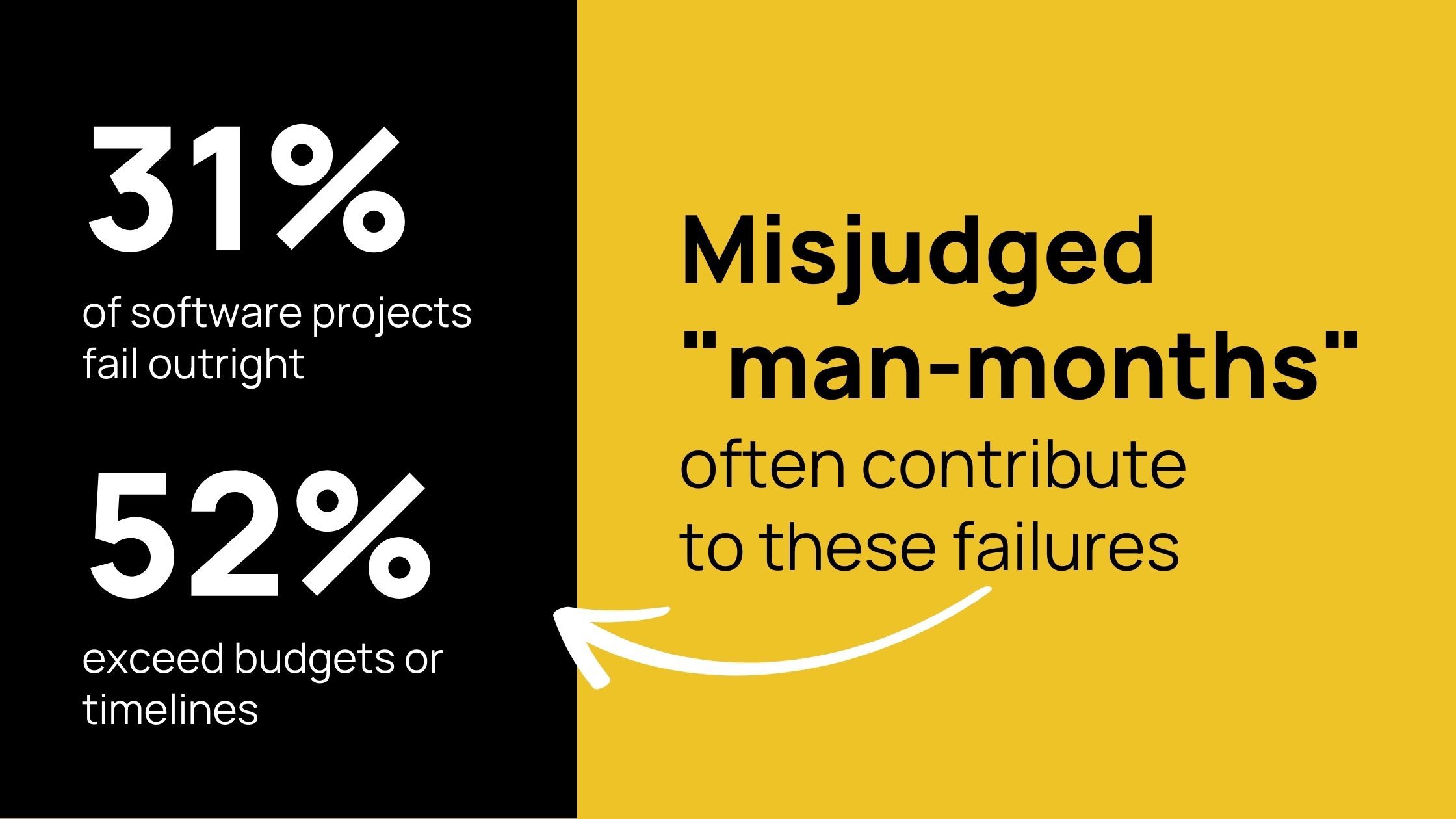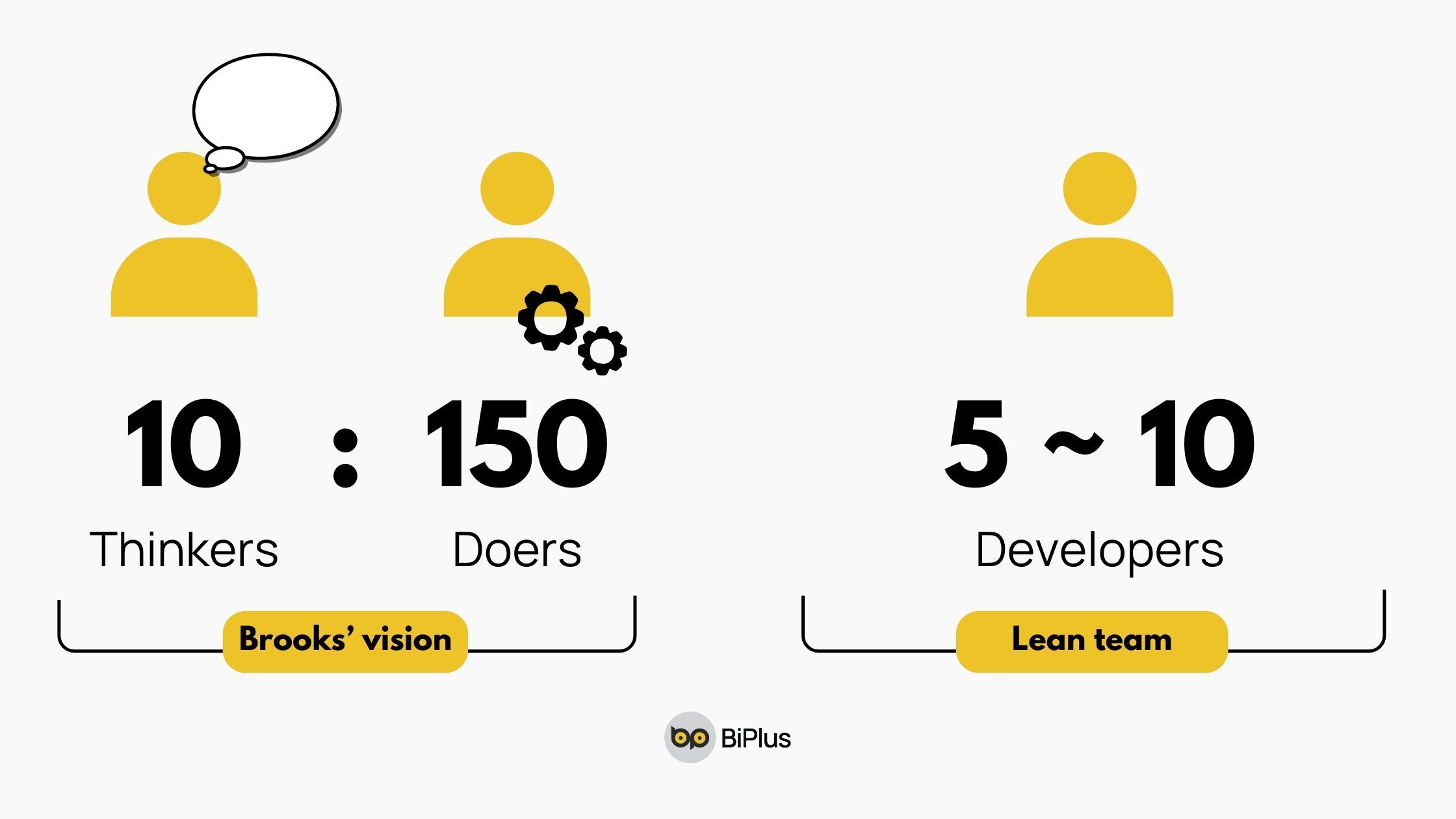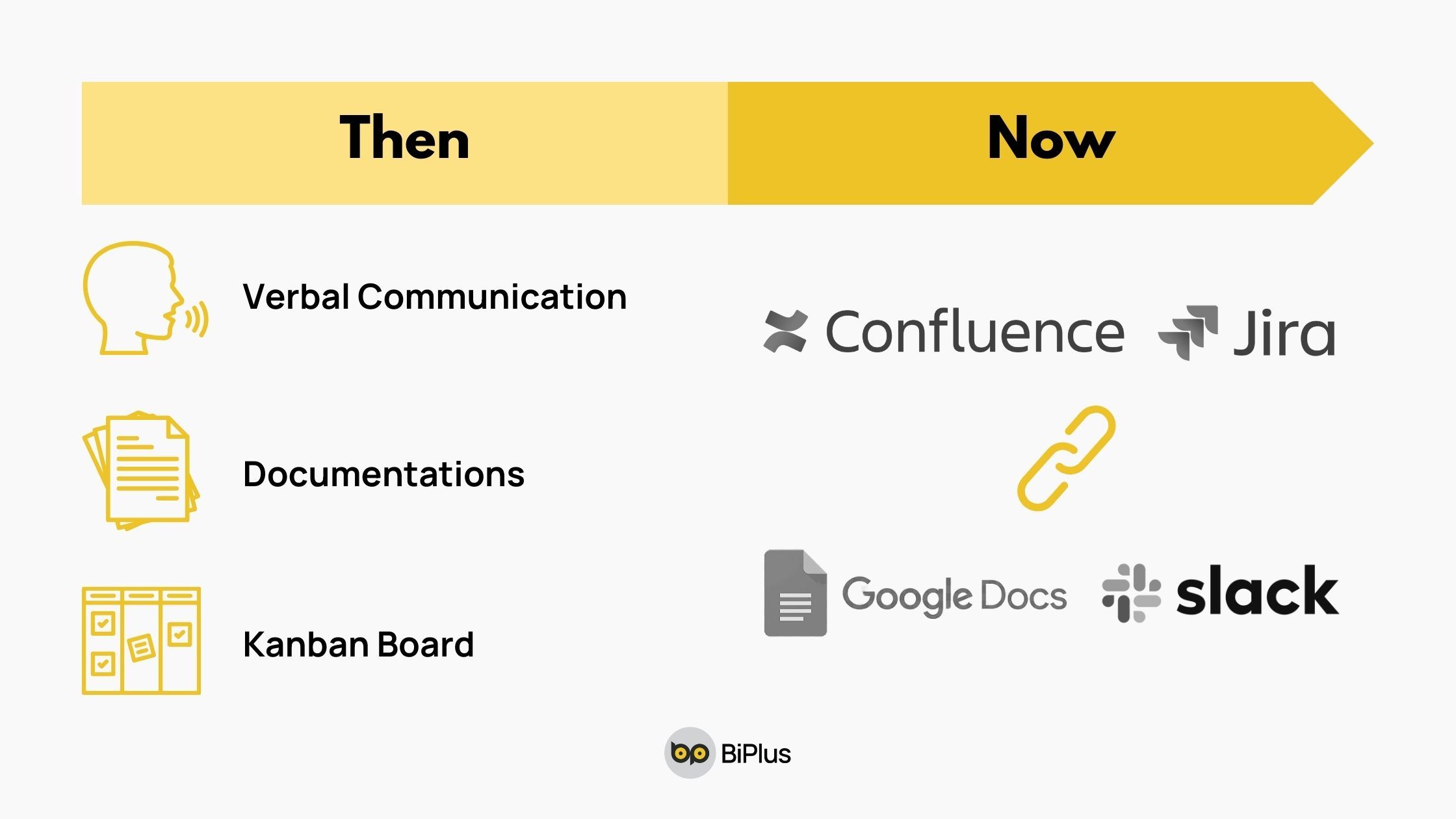The term "man-month" often sparks debate in IT circles, but what does it truly mean? For enterprises outsourcing software, developers working daily, or leaders guiding tech teams, this concept is more than just a historical term - it's a key to project success or failure. Let's explore its definition, its 50-year journey, and how BiPlus Software Solutions learns, applies, and transforms this well-known metric into a reliable tool, saving clients millions with tangible results.
Table of contents [ Hide ]
Man-Month Definition: Basics and Brooks' Insights
From Factories to Code: The Evolution of "Man-Month"
The Numbers Speak
Reliable IT Outsourcing with BiPlus
50 Years Later: What Has Changed and What Hasn't
Architecture Then and Now: Brooks' Vision vs. Today
Communication: A Timeless Challenge
Organizational Structures: Trees Still Stand
Why This Matters to Your Business
Conclusion: Master the Man-Month with BiPlus
Man-Month Definition: Basics and Brooks' Insights

A "man-month" measures effort: the work one person can accomplish in a month. It's a straightforward way to estimate project scope - multiply the number of people by time. However, in 1975, Fred Brooks challenged this notion in The Mythical Man-Month, arguing that adding more people to a delayed project only slows it down further. His book didn't dismiss the man-month; it encouraged smarter use. BiPlus embraces this challenge daily.
From Factories to Code: The Evolution of "Man-Month"
Initially used in the early 20th century for physical tasks like building bridges, the "man-month" concept was straightforward: 12 people for one month or 6 for two months. However, software development changed the landscape. Brooks' critique in 1975 highlighted the complexities of coding - creative, intricate, and prone to errors when scaled improperly. Despite this, as Gergely Orosz notes in his 2024 essay, the man-month remains relevant. Modern tools like high-level languages, IDEs, and APIs enable faster delivery than in Brooks' era. BiPlus refines the man-month concept with field-proven strategies.
The Numbers Speak

According to The Standish Group, 31% of software projects fail outright, and 52% exceed budgets or timelines. Misjudged "man-months" often contribute to these failures - adding more hands doesn't always help. Brooks' 1970s breakdown - 1/3 planning, 1/6 coding, 1/2 testing - still influences estimates, compounded by meetings and unexpected challenges. BiPlus turns these odds into successes by grounding man-months in reality.
Reliable IT Outsourcing with BiPlus
Founded in 2018 by telecom veterans with over 15 years of experience, BiPlus Software Solutions enhances digital transformation and system integration for enterprises. With over 100 engineers, we are Vietnam's leading Atlassian partner and SAFe consultant, serving telecom, banking, fintech, and e-commerce leaders across Vietnam, APAC, and America. We don't discard the "man-month" - we continue the pursue to make it perfect:
Proven Teams: Our 100+ experts - backend, frontend, Atlassian specialists - make man-months measurable and effective.
Precision Planning: We meticulously plan every phase, reflecting Brooks' 1/3 planning principle, to avoid pitfalls.
Trusted by Industry Leaders: Our 30+ large-scale projects for telecoms, banks, and entreprises demonstrate that man-months can deliver results when executed correctly.
A Vietnamese telecom company upgrading its legacy system saved millions - not through guesswork, but by mastering man-months. Orosz attributes today's pace to advanced tools and leaner teams; BiPlus combines this with Brooks' wisdom for reliable outcomes.
50 Years Later: What Has Changed and What Hasn't
Brooks wrote during the mainframe era, yet his lessons endure. Orosz's essays reveal how The Mythical Man-Month continues to guide B2B, engineers, and leaders:
Brooks' Law remains relevant: Adding team members late in a project often complicates communication and delays progress. BiPlus counters this with compact, skilled teams.
Productivity Advances: In the '70s, developers wrote 600-5,000 lines yearly; today, GitHub logs thousands monthly (e.g., Kubernetes: 1,300). High-level languages and tools drive this - BiPlus leverages them for clients.
Estimation Challenges Persist: Brooks' "twice as long" adage holds, exacerbated by dependencies and distractions. Our structured plans mitigate this.
Joy in Coding Endures: Brooks' five joys - creation, utility, complexity, learning, imagination - continue to inspire coding. BiPlus builds teams that embody these values.
Modern developments abound. MVPs launch in weeks, not years. Debugging is smoother with IDEs, but tech choices (e.g., numerous frameworks) add complexity. Architecture has evolved too - more on that next.
Architecture Then and Now: Brooks' Vision vs. Today

Brooks emphasized architecture for large projects like OS/360. In Chapter 4, he separated "architects" (designers) from "implementers" (coders), advocating a 10:150 ratio - 10 thinkers, 150 doers. This approach failed when implementers joined planning early, extending timelines and increasing bugs. Orosz highlights this as outdated:
Smaller Teams Rule: Today's projects start with 5-10 developers, not 100+. Microservices and APIs (like Bezos' 2002 mandate) allow teams to work independently, syncing through interfaces. BiPlus capitalizes on this agility.
Hands-On Architects: Brooks' detached architects miss modern realities - Uber's 400-developer app rewrite succeeded with staff engineers coding alongside teams. BiPlus ensures our leaders remain engaged.
Prototyping Wins: Brooks preferred polished systems; now, rapid prototypes shape designs in months. We use this to quickly meet client needs.
Yet, some truths remain. Well-architected systems still require "conceptual integrity" - simplicity and functionality. BiPlus balances this, refining man-months to align design and delivery.
Communication: A Timeless Challenge

Brooks emphasized communication's importance in Chapter 5. Large projects falter without it - then and now. His blend of informal chats, formal specifications, and written logs mirrors today's Slack, Jira, and Confluence. Orosz notes little has changed - large teams still need processes to propose architectural changes. BiPlus maintains tight communication, ensuring man-month estimates reflect genuine collaboration, not chaos.
Organizational Structures: Trees Still Stand

Brooks advocated for tree-like organizational structures with clear hierarchies in the 1970s. Orosz confirms that such structures remain common today due to their simplicity. At BiPlus, we excel in this clarity, effectively coordinating our team of over 100 engineers across multiple scrum teams and working with various customers in a lot of geographies, to manage more than 30 projects successfully. When roles align seamlessly, productivity measured in man-months significantly increases.
Why This Matters to Your Business
For B2B leaders and engineers outsourcing telecom, fintech, or e-commerce upgrades, mastering "man-months" is crucial. BiPlus, growing from 15 employees in 2018 to over 100 in 2024, provides rapid (2-4 weeks) integration. Our approach refines Brooks' insights, emphasizing reliable man-months, expertise, and dedicated effort, backed by proven success.
Conclusion: Master the Man-Month with BiPlus
The "man-month" began as a factory measure, but Brooks revealed its complexities in software. Fifty years later, it's no myth - it's a method when refined. BiPlus demonstrates this, transforming enterprise technology with precision, from legacy overhauls to high-performance apps, trusted by major clients. Engineers and leaders rely on us to make man-months synonymous with success. Your next project can too.
Curious about how we refine man-months for you? Reach out to BiPlus today.



















